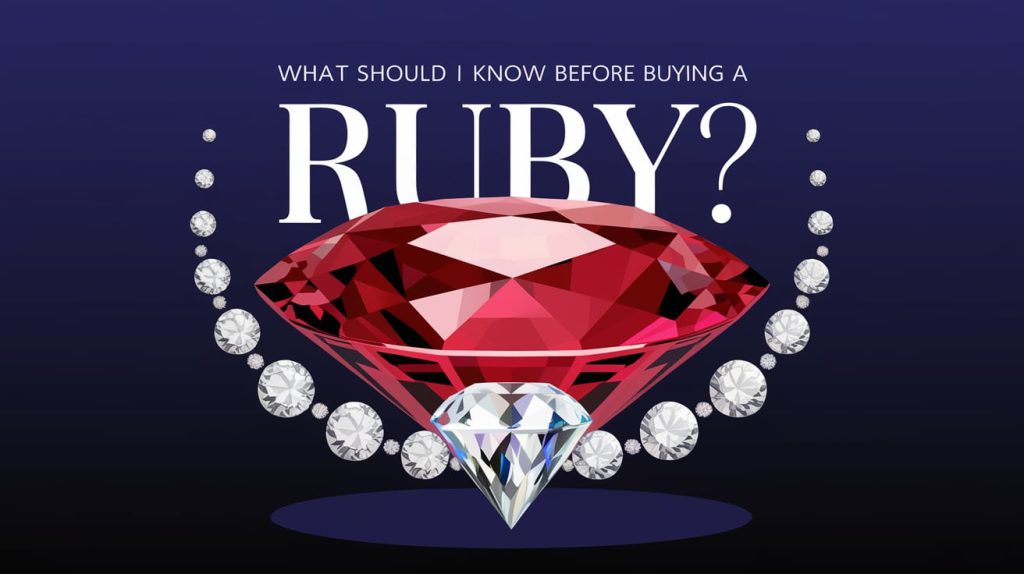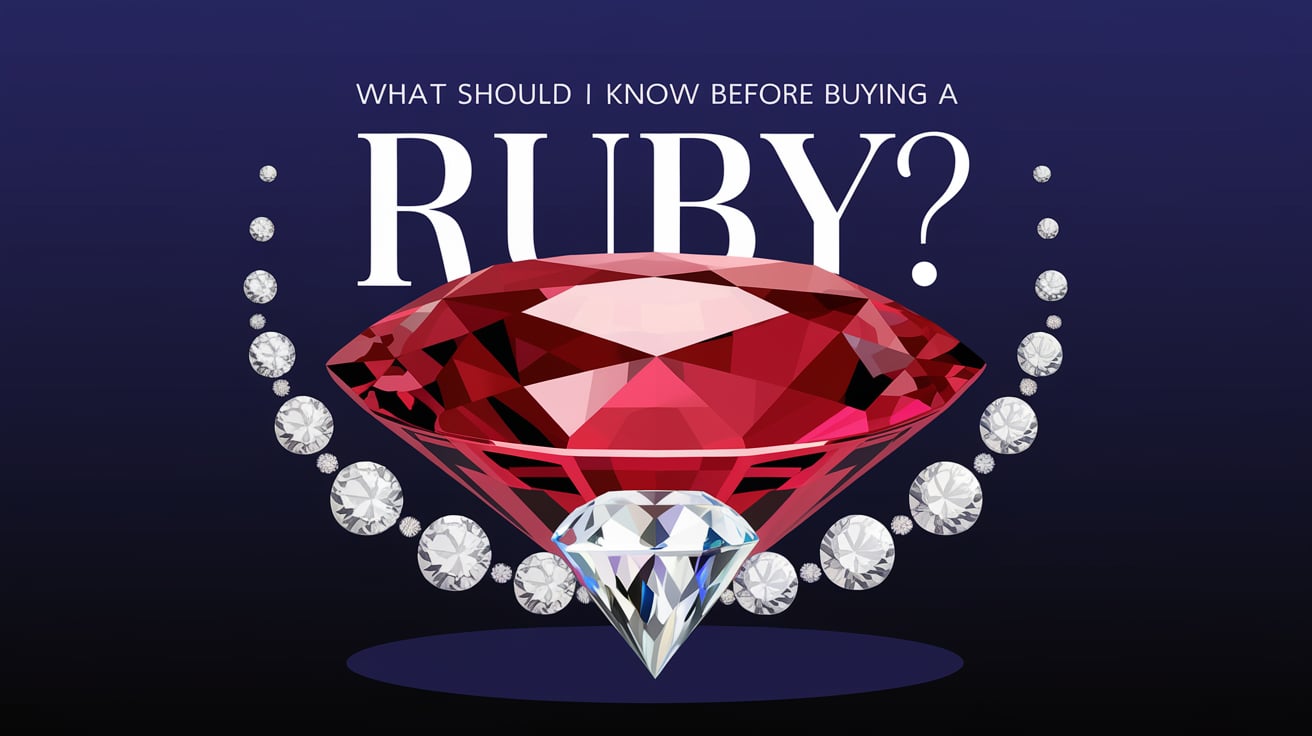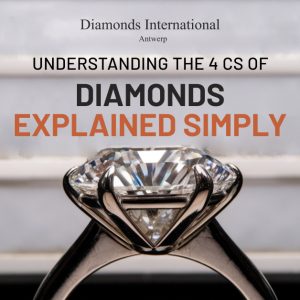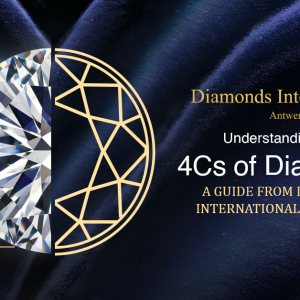Rubies are one of the most cherished gemstones, admired for their rich red color and historical significance. From ancient civilizations to modern jewelry, these gemstones have been associated with power, passion, and nobility. But beyond their striking appearance, there’s a lot to learn about rubies—how they’re formed, their durability, and how to choose the best one.
In this guide, we’ll explore everything you need to know about rubies in a simple and easy-to-understand way.
The History and Symbolism of Rubies
Rubies have been valued for centuries and were once considered one of the “Cardinal” gems—gemstones that were historically the most prized. Many famous rubies were owned by Indian Maharajas, European royalty, and collectors around the world. Interestingly, some rubies thought to be valuable in the past turned out to be spinels upon closer inspection.
In ancient India, ruby was known as the “king of precious stones” due to its rarity and durability—second only to diamonds. It was often associated with power and energy. Some believed rubies could bring protection from misfortune, while others thought they had healing properties. In medieval Europe, rubies were considered symbols of health, wisdom, and success in love. Burmese warriors even believed rubies made them stronger in battle.
These gemstones have often been linked to strength, nobility, and passion. The deep red color of rubies is associated with love and energy—just like the red of roses and fire. In many cultures, rubies were believed to have protective qualities, with warriors even wearing them into battle for good fortune.
Ruby is also a traditional gift for the 15th and 40th wedding anniversaries.
Today, some of the world’s most famous rubies can be seen in museums, including a collection at the Smithsonian Museum in Washington, D.C.

SYMBOLISM
Ruby: The Birthstone of July
Ruby is the birthstone for July and is known for its deep red color. Its name comes from the Latin word “ruber,” which means red—a color often linked to love and passion. The most valuable shade of ruby is a deep red with a slight hint of purple, commonly called “pigeon’s blood.” This gemstone is a variety of the mineral corundum and gets its color from traces of the element chromium. More chromium results in a stronger red hue.
If you are considering a ruby, whether for yourself or a loved one born in July, here is some helpful information.
What Are Rubies Made Of?
Rubies belong to the corundum mineral family, just like sapphires. In its purest form, corundum is actually colorless. The rich red hue of rubies comes from the element chromium, which interacts with the crystal structure. The more chromium present, the deeper and more intense the red color.
Interestingly, the same chromium that gives rubies their color also creates inclusions—tiny natural imperfections inside the gemstone. These inclusions can take different forms, including tiny mineral particles or liquid droplets that resemble fingerprints. Finding a ruby with perfect clarity is rare, and most high-quality rubies will still have some visible inclusions.
Where Are Rubies Found?
Rubies are mined in various locations around the world, with some regions producing more valuable stones than others.
- Myanmar (Burma): Known for producing some of the highest-quality rubies, including the famous “pigeon’s blood” rubies.
- Vietnam: Produces beautiful rubies with pink to purplish-red hues.
- Mozambique: One of the newer sources of rubies, offering stones similar in quality to those from Burma.
- Thailand & Cambodia: Historically important ruby sources, though production has declined.
- Sri Lanka, Madagascar, Kenya, and Tanzania: Other notable ruby-producing countries.
Each location produces rubies with unique characteristics, such as variations in color, clarity, and inclusions.
Ruby Treatments: What You Need to Know
Many rubies undergo treatments to improve their color and clarity. The most common treatment is heat treatment, which enhances the gemstone’s natural red hue and reduces visible inclusions. Heat treatment is widely accepted in the jewelry industry and does not add any artificial substances to the stone.
However, some lower-quality rubies undergo treatments like lead glass filling, where glass is used to fill cracks and improve the appearance. While this makes the ruby look better, it is not a permanent solution, as the treatment can wear down over time. When purchasing a ruby, it’s important to ask whether the gemstone has been treated and what type of treatment was used.
How Durable Are Rubies?
The durability of a gemstone is determined by three factors:
- Hardness – Resistance to scratches and chips.
- Toughness – Resistance to breaking or cracking.
- Stability – How well it maintains its appearance over time.
Rubies score a 9 on the Mohs hardness scale, making them one of the hardest gemstones, second only to diamonds. This makes them suitable for everyday wear, whether in rings, necklaces, or bracelets. However, like all gemstones, they are not indestructible and should be handled with care.
How Are Rubies Graded?
GIA evaluates rubies but does not give them a grade. A GIA report provides details about a ruby’s characteristics, origin (if possible), and any treatments detected.
Also, Unlike diamonds, rubies do not follow a strict grading system. However, they are evaluated using the 4Cs—Color, Clarity, Cut, and Carat Weight.
1. Color
The most important factor in a ruby’s value is its color. The ideal ruby is a deep, rich red with a slight blue or purple undertone, often referred to as “pigeon’s blood red.” However, rubies can also have pink, orange, or brown undertones.
2. Clarity
Most rubies contain natural inclusions. A high-quality ruby will have minimal visible inclusions while maintaining strong color. Completely clear rubies are extremely rare and expensive, while overly included rubies may appear cloudy or dull.
3. Cut
A well-cut ruby enhances its color and brilliance. Common cuts for rubies include oval, cushion, and round cuts, which maximize the stone’s visual appeal.
4. Carat Weight
Larger rubies are rarer and more valuable, but a well-cut smaller ruby with deep color may be more desirable than a larger stone with a less vibrant appearance.
Tips for Buying a Ruby
- Choose a trusted jeweler. A jeweler with gemological training can help you understand the differences in ruby quality.
- Don’t rely only on origin. Some famous mines produce low-quality rubies, while high-quality stones can come from various locations.
- Ask about treatments. Many rubies are heat-treated to enhance their color. Some may also have color diffusion or lead glass filling. Ask for details before buying.
- Get a lab report. A gemological report from a trusted lab, such as GIA, can confirm whether a ruby is natural and if it has undergone any treatments.
How to Care for Your Ruby Jewelry
Rubies are durable but still require proper care to maintain their beauty over time.
- Cleaning: Use warm, soapy water and a soft brush to clean your ruby jewelry. Avoid harsh chemicals that could damage the stone.
- Storage: Store rubies separately from other jewelry to prevent scratches.
- Avoid Heat and Chemicals: While heat-treated rubies are stable, exposing them to extreme heat or strong chemicals can alter their appearance.
Professional Checkups: If your ruby is set in a ring or other jewelry piece, have it checked periodically to ensure the setting is secure.
Final Thoughts
Rubies are timeless gemstones that have been admired for centuries. Their deep red color, durability, and historical significance make them a popular choice for fine jewelry. Whether you are purchasing a ruby for its beauty, symbolism, or as a birthstone for July, understanding its characteristics will help you choose the right gemstone.
When buying a ruby, always consider its color, clarity, and whether it has undergone any treatments. With proper care, a ruby can remain a treasured piece for generations to come.
Read More:
Why Fine Jewelry Makes the Perfect Gift for Any Occasion
Must-Have Fine Jewelry Pieces for Your Collection This Season
Tips for Caring for Your Jewelry at Home
The Do’s and Don’ts of Storing Your Luxury Fine Diamond Jewelry
FAQ’s
Q: Does heat treatment affect a ruby’s value?
Most rubies are heat-treated. A ruby with a report confirming no heat treatment is rare and may have a higher value. Rubies with color diffusion or glass filling are worth less than heat-treated ones.
Q: What is a created ruby?
Lab-grown rubies are made in controlled environments and are labeled as “lab-created” or “laboratory-grown” rather than “synthetic.” These are real rubies but are not naturally formed.
Q: Why Are Rubies Red?
Rubies get their red color from the element chromium found in the mineral corundum. The amount of chromium affects the shade, ranging from orange-red to deep red. Chromium also causes rubies to glow under ultraviolet light, giving them a unique appearance.
Q: Do Rubies Have Inclusions?
Yes, it is common for rubies to have inclusions. These natural imperfections are proof that a ruby is genuine. Finding a ruby without inclusions is rare, and such stones are often more valuable.
Q: Why Are Rubies Popular?
Rubies are admired for their deep red color, which symbolizes love and passion. In recent years, ruby jewelry has become a popular choice, especially for engagement rings. Rubies are also very durable, ranking just below diamonds in hardness, making them suitable for everyday wear.
Q: Are Rubies Used in Engagement Rings?
Yes, rubies are often used in engagement rings. Many couples prefer them for their vibrant color and durability. You can buy a pre-made ruby ring or customize your own to create a meaningful piece of jewelry.



